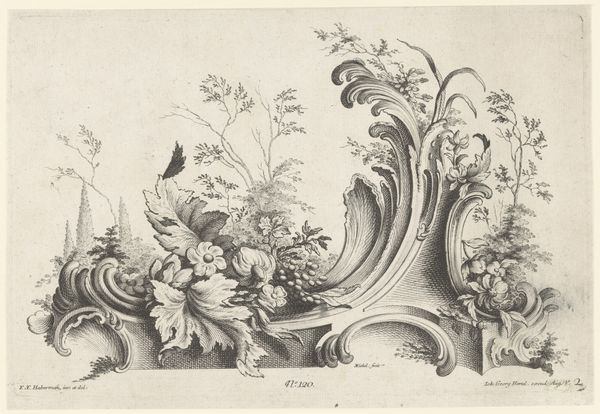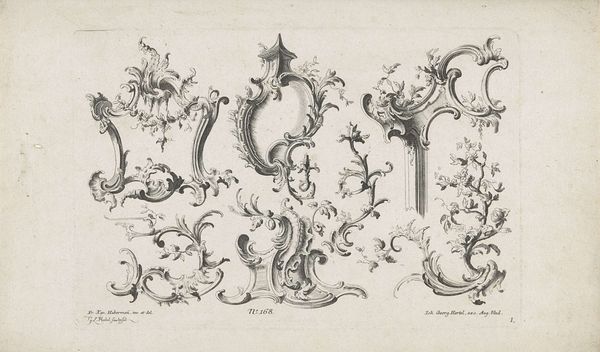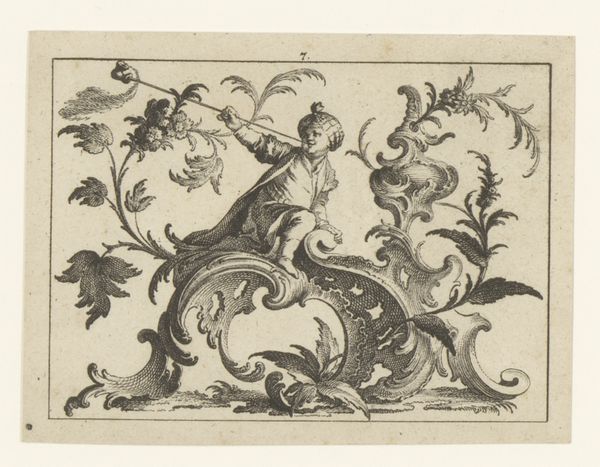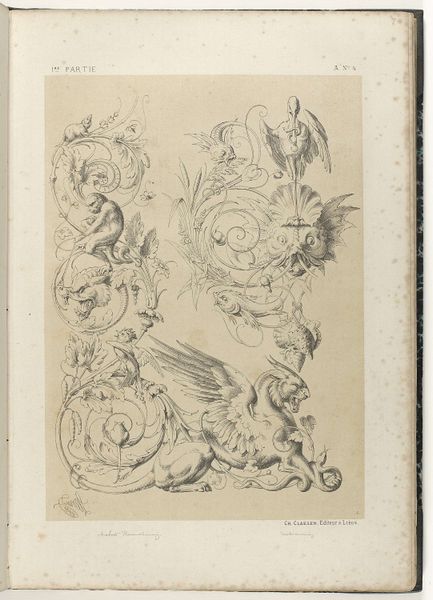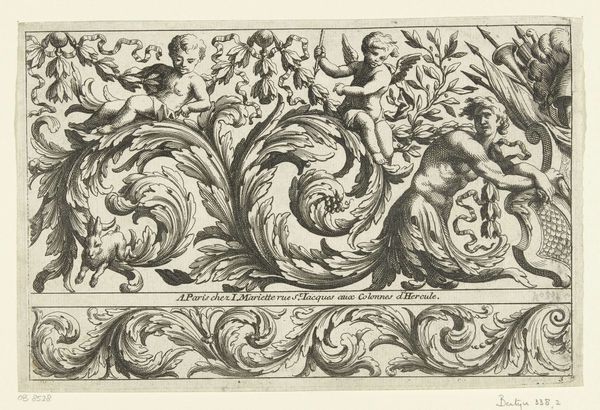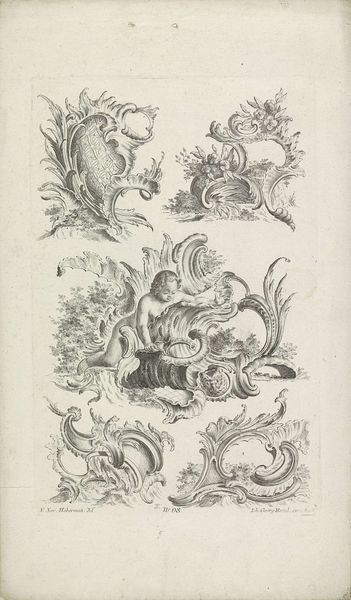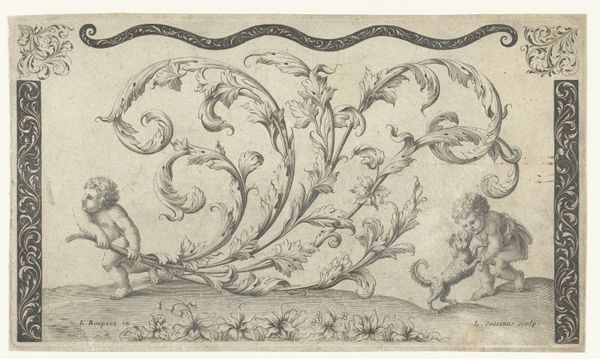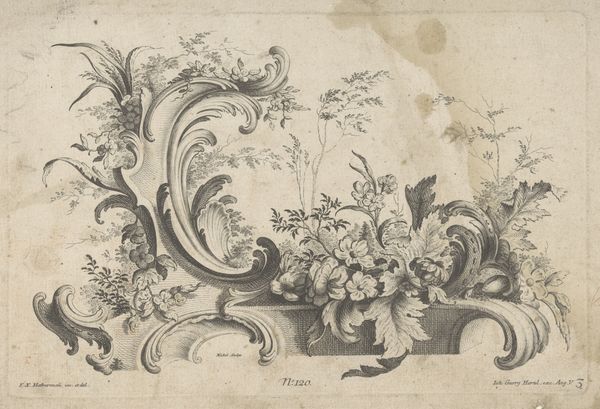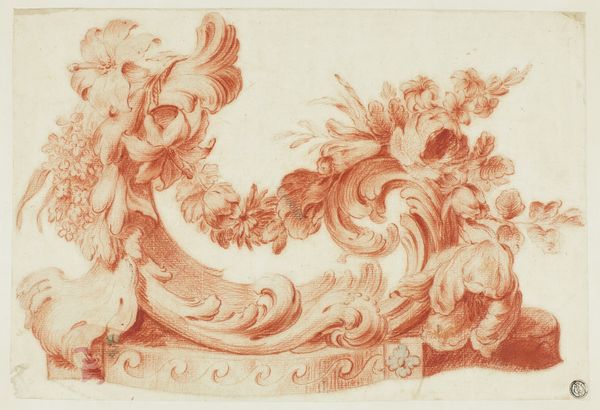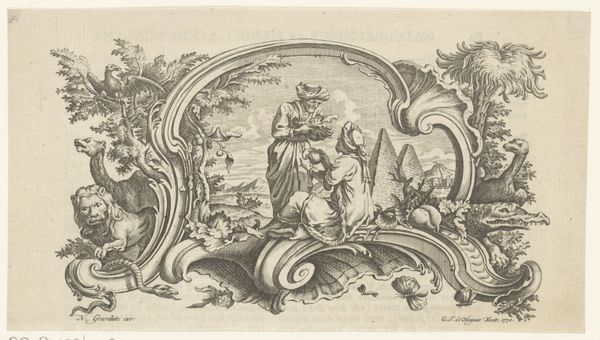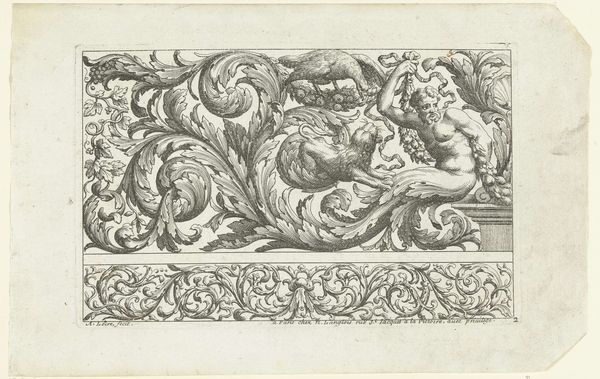
drawing, ornament, print, engraving
#
drawing
#
ornament
#
pen drawing
# print
#
old engraving style
#
form
#
line
#
engraving
#
rococo
Dimensions: height 202 mm, width 306 mm
Copyright: Rijks Museum: Open Domain
Curator: This is “Rocaille Ornament met Bloemen,” an engraving likely dating between 1731 and 1775. Its creator is listed as Emanuel Eichel, and we're fortunate to have it here at the Rijksmuseum. Editor: My first thought is: whimsical yet disciplined. It possesses a natural grace, a structured asymmetry. You've got flowers and fronds exploding from this elaborate frame but within very defined boundaries. Curator: Precisely! The Rococo style is interesting precisely because it represents an aesthetic negotiation. Following the more rigid Baroque, there's this desire to incorporate the natural world but still maintain control, a sense of aristocratic order. Editor: The lines are remarkable—notice how delicate yet deliberate they are. Every curl, every vein on a leaf... It feels very symbolic to me. The swirling patterns, those little eruptions of floral life – I can't help but think of the era's tumultuous social shifts trying to burst forth from under the constraints of monarchy. Curator: It’s intriguing to interpret ornament in such a light. What elements particularly spark your sense of underlying societal tensions? Editor: Look at how contained the flowers are within that frame, almost struggling against it. Think about how ornament and decoration in the homes of the elite also suggested a display of wealth built on power dynamics that oppressed common citizens. Each detail becomes charged, embodying both beauty and the suppression that fuels its creation. The piece presents this duality, a desire for freedom pushing against societal structures. Curator: It's fascinating to consider these images, designed seemingly for pure aesthetic pleasure, as potential sites of political or social commentary, albeit veiled or indirect. And consider this could be used as design inspiration for furniture and architecture, spreading that potential subversive commentary beyond the walls of art collections. Editor: Precisely. This image offers a fascinating look into both artistic expression and hidden cultural anxieties during that era. Curator: It’s wonderful how engaging with this artwork through the lens of symbolism allows one to glimpse broader cultural narratives, underscoring the multifaceted dimensions inherent in even the seemingly innocuous decorative elements.
Comments
No comments
Be the first to comment and join the conversation on the ultimate creative platform.
